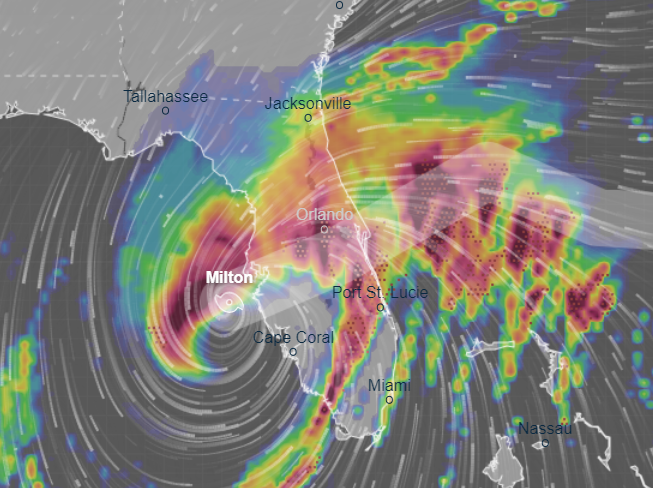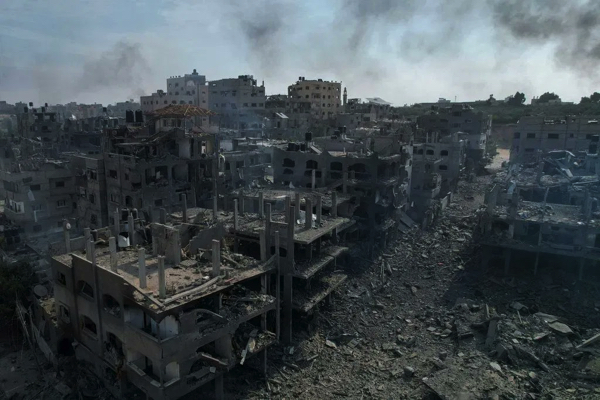
Tampa Bay spared from worst-case storm surge
Milton was a strange one in that it started off very small before quickly picking up speed and intensity. It went from a tropical storm to a Category 5 hurricane in a day or two before calming down slightly to a Category 3 at landfall. There were concerns that the eye of Milton would hit just north of Tampa Bay, which would have resulted in massive storm surge flooding. Because the storm hit slightly to the south of Tampa Bay, the wind direction was opposite, resulting in water being drawn out of Tampa Bay rather than into it as the storm approached. After Milton made landfall late on Wednesday, Gov. Ron DeSantis told people in its path to just "hunker down" because by that point it was already too late to try to leave. More than 100 tornado warnings were issued in the hours before Milton made landfall when its outer bands were widening and stretching across the state, including down in the southeastern Miami region. At least 125 homes were destroyed before Milton even made landfall. At least 12 people are dead from Milton, five of whom were killed by tornadoes that spawned in St. Lucie County. More casualties are expected as cleanup progresses. There are also reports that the roof of Tropicana Field was ripped off by the storm. Tropicana Field had been set up as a makeshift shelter for first responders, but the cloth-like roof material was easily ripped to shreds by Milton, causing the first responders to have to move elsewhere. As of this writing, about 70 percent of Pinellas County (Clearwater, Largo and St. Petersburg) is still without power. "This will be a lengthy restoration," said Jeff Baker of Duke Energy at a news conference, warning that some residents could be without power for a week or even longer. As for the tap water situation in St. Petersburg, Mayor Kenneth T. Welch announced on Thursday that there were 30 water line breaks caused by the storm but that tap water access had been restored. Residents are still encouraged to boil the water before drinking it or brushing their teeth, but Welch says people can still shower in it right out of the tap. The latest news about the latest disasters can be found at Disaster.news. Sources for this article include: TheHill.com NaturalNews.com CNN.comIsrael’s FINAL SOLUTION for Gaza is genocide followed by annexation into Greater Israel
By Ethan Huff // Share
UN confirms Israel is deliberately targeting peacekeepers in southern Lebanon
By Richard Brown // Share
Hamas official: Group’s resistance to Israel WILL CONTINUE despite killing of Yahya Sinwar
By Ramon Tomey // Share
U.S. proposal for Lebanon “ceasefire” looks more like a demand for surrender
By Cassie B. // Share
Nvidia's $20 billion licensing deal for Groq targets Google's AI chip dominance
By isabelle // Share
The End of Slavery: A radical blueprint for true liberation
By kevinhughes // Share
U.S. cements status as global hydrocarbon superpower
By jacobthomas // Share
Ready-to-eat salads and snack packs RECALLED over Listeria risk
By oliviacook // Share
Winter survival: Essential strategies for a safe long-distance bug-out
By dominguez // Share











